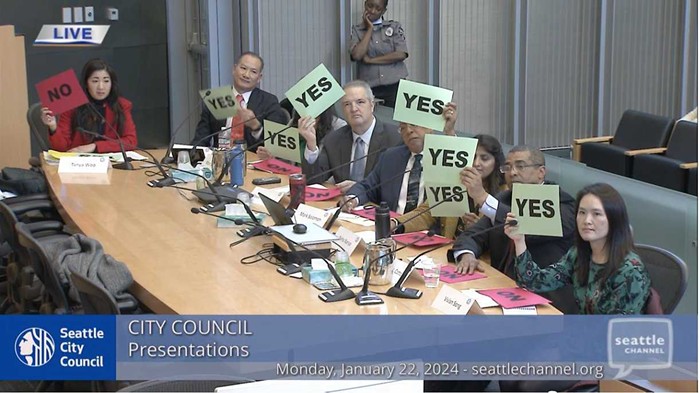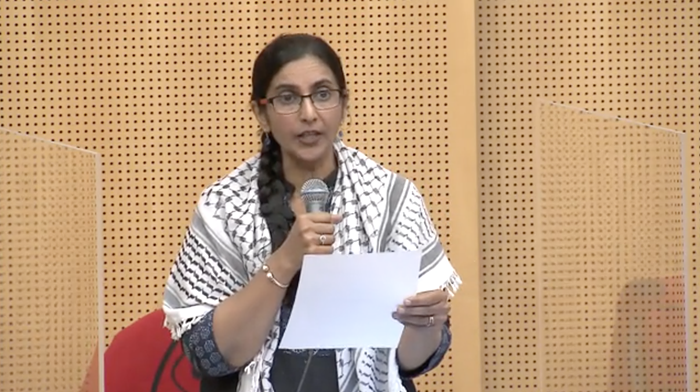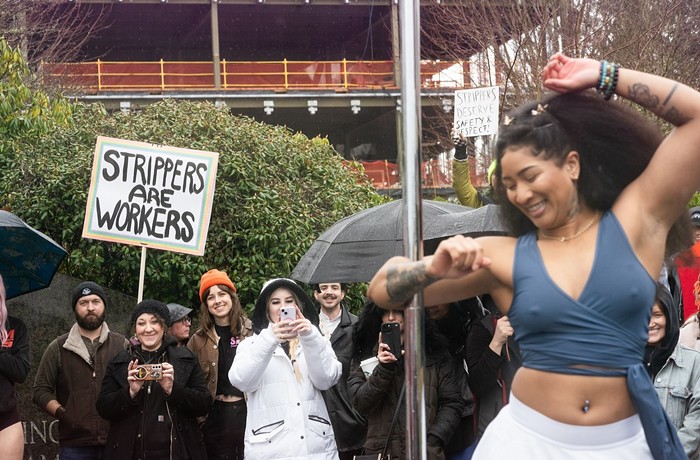Chances are you haven't been inside King County Juvenile Court, located on 12th Avenue in the Central District, unless you're either a wrecked kid or somehow responsible for one. The court handles almost all of the juvenile offender cases (e.g., children who steal), dependency cases (e.g., children who are abused), at-risk cases (e.g., children in need of social services), and drug and treatment cases in the county. A national model for keeping repeat offenders out of the court system, it sees roughly 5,529 cases annually. But the 59-year-old court building is toxic, cramped, and falling apart. Plumbing in the facility is generally shot, leading to rank, pervasive smells of sewage on the second floor and brown drinking water throughout the building. Hot water has been shut off in 20 percent of the building for the past three years and the electrical system is past its retirement age.
"It's not a functional building," explains Judge Helen L. Halpert, a 20-year veteran currently on rotation in the juvenile offender court. "It's filthy, it's decaying, and it sends an evil message to the primarily poor people who we see: 'You just don't matter.'"
Which is one of the reasons why, last fall, Judge Bruce Hilyer, then-presiding judge of the King County Superior Court, led county officials in urging voters to approve Proposition 1, a small sales-tax hike that would raise $150 million to replace the decaying building on site (while funding other public safety services). But in November, shortly after county officials discovered toxic PCB contamination in the caulk lining the courthouse windows—toxins linked to everything from skin rashes to liver failure—voters rejected Prop 1.
"There really was no Plan B for fixing or replacing the courthouse," says Judge Hilyer.
Finished in 1952, the courthouse was built to accommodate Seattle's population growth only up to 1982, so it's cramped in there. Old cell blocks have been transformed into kitchens and offices. Boxes of court files line hallways. Gang fights break out in the courthouse lobby, amid confidential attorney/client conversations, because there are only three closetlike rooms that offer private sanctuary outside a bathroom stall, and those rooms are always occupied.
"You overhear a lot of private conversations you shouldn't have to overhear," says Karen, a mother whose son has appeared at the court. "Lawyers talking to parents who are accused of abusing their children, that kind of thing. There's no confidentiality."
Shortly after voters rejected the levy last fall, the juvenile court closed four of its seven courtrooms to deal with the PCB problem and the cash-strapped county scrambled to find a few million dollars to pay for abatement. Two-thirds of the court's juvenile cases were diverted to the downtown courthouse.
Despite its many structural failings, Hilyer says the courthouse possesses at least one valuable asset it can leverage for a new building: land. Over the past six months, county officials have been receiving unsolicited proposals offering to relocate the courthouse in exchange for its prime location—a 256,057-square-foot parcel appraised at over $65 million in 2010 (with facilities), according to King County property records. In response to the offers, Hilyer has pushed county officials to pay attention to the bids while working to start a process that would call for more development bids. In the coming months, due to Hilyer's tenacity on behalf of the forgotten courthouse, the county plans to open up a bidding process for more proposals.
Hilyer says moving presents its own set of problems, like squeezing a court into a building that wasn't designed as a courthouse. (It would also require building a new juvenile detention center, which is currently attached to the courthouse and is in proper working order.)
While facilities director Kathy Brown says that no firm timeline has been set for the bidding process, Hilyer says it can't happen too soon.
Because regardless of its hang-ups, the court itself is a national model for its juvenile diversion program, which keeps many first- and second-time youth offenders out of the court system by offering them community service, fines, or counseling in lieu of a criminal record. The county's juvenile diversion programs have reduced the average juvenile detention population by 56 percent since 1998.
Even if the private bids fail to pan out, Hilyer says that in this economic climate, the court is obligated to explore every creative option before asking taxpayers for help—again. "We have to prove to them we've exhausted all other options before we return to the public with another scheme," he says.



















